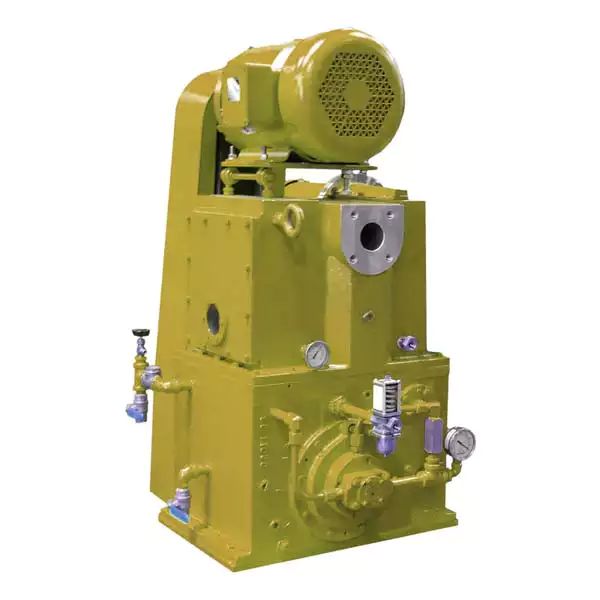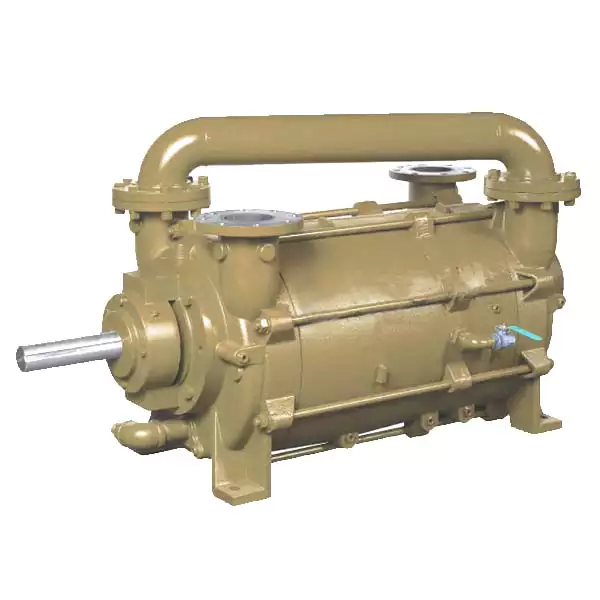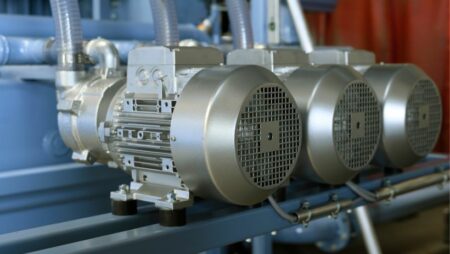Product Description
HangZhou Haozheng Hydraulic Machinery Equipment Co., Ltd.
HangZhou Haozheng Hydraulic Machinery Equipment Co., Ltd. is a manufacturer that started researching, developing, manufacturing and selling hydraulic pumps earlier in China. The main hydraulic products include A10VSO\PVH\PAVC\A11VO\A4VSO\PV\PVXS and other series of plunger pumps and 油圧部品, which are exported to Canada, the United States, Mexico, Brazil, Norway, Italy, France, the United Kingdom, Russia, South Africa, Kenya, Saudi Arabia and others. It is widely used in steel mills, power plants, engineering machinery, mining machinery, industrial equipment, metallurgical machinery, injection molding, oil drilling, ports and ships and other fields.
product-group/nMBGJqeDbgVC/Parker-Piston-Pump-catalog-1.html
product-group/ZeNaotCEAgVi/Rexroth-Piston-Pump-catalog-1.html
product-group/jeJAcxmvuIfG/Vikcers-Piston-Pump-catalog-1.html
product-group/BqFfjLEznPVk/Hydraulic-pump-parts-catalog-1.html
Product Description
| Mode | Control | displacement cm³/rev | Flow L/min | Bar | Rpm | Power/kw | Cm | Kg |
| PAVC100 | Standard pressure control omitted A pressure flow (load sensing) *C pressure flow power control *H pressure, power limit |
100 | 179.8(1800rpm) | 207bar-248bar | 2600 | 71.2 | 42x25x31 | 50 |
| PAVC65 | 65 | 118.1(1800rpm) | 3000 | 43.1 | 36x24x24 | |||
| PAVC33 | 33 | 59(1800rpm) | 21.3 | 29x22x19 | ||||
| PAVC38 | 38 | 67.8(1800rpm) | 24.6 | 29x22x19 |
Our Products
We provide various models of axial variable displacement piston pumps and accessories, including the CHINAMFG brand’s A11VO, A10VSO, A11VO, the Vikers brand’s PVH, PVXS, PVB, PVM, and the CHINAMFG brand’s PAVC, PVP, PV. We also offer the Cate tractor modified version PVH 6E-3136 series. Therefore, hydraulic pumps can be customized according to displacement, control method, flange port, etc.
Company Profile
よくあるご質問
1.What’s the application for pump?
Construction equipment Steel factory or Power plant Industrial equipment Related hydraulic system
2.What about the MOQ?
MOQ:1pcs.
3.Are you manufacturer? And what’s the delivery time?
Yes, we are manufacturer and have our own factory. Generally, its in stock for common models, 1-3 days will be finished and sent to customer in time.
4.Which payment methods are accepted?
We usually accept T/T,L/C,Western union,Trade assurance,VISA Card.
5.How about the inspection and Guarantee of products?
We promise: all products are tested before ship, to confirm it will be working and in good conditions when customers get. Also, we offer 12-month guarantee, if it doesn’t work due to quality issue in the period, we will send spares to repair for free. Accordingly, the pump will work last at least 18 months.
6 What about your after-sale service?
If there is any question in use, please talk with your sales manager at any time, so we will know your problems are and help to solve.
We can provide ODM and OEM service
Production capacity:
| Product Line Name | Production Line Capacity | Actual Units Produced(Previous Year) |
|---|---|---|
| A10VSO Series Piston Pump,HG Series Gear Pump,PAVC Series Piston Pump,PV Series Piston Pump,PVH Series Piston Pump | 2 |
Export Market Distribution:
| Market | Total Revenue (%) | |
|---|---|---|
| North America | 6 | |
| South America | 4 | |
| Eastern Europe | 8 | |
| Southeast Asia | 2 | |
| Africa | 3 | |
| Oceania | 2 | |
| Mid East | 2 | |
| Eastern Asia | 1 | |
| Western Europe | 3 | |
| Central America | 2 | |
| Northern Europe | 2 | |
| Southern Europe | 3 | |
| South Asia | 2 | |
| Domestic Market | 60 |
Production Machinery:
| Machine Name | Brand & Model No. | Quantity | Number of Year(s) Used | Condition |
|---|---|---|---|---|
| CNC Machining Center | Confidential | 8 | 2 | acceptable |
| CNC Lathe | Confidential | 4 | 2 | acceptable |
| Surface Grinder | Confidential | 1 | 2 | acceptable |
| Cylindrical Grinder | Confidential | 1 | 2 | acceptable |
| Hydraulic Gear Drawing Machine | Confidential | 1 | 2 | acceptable |
| Horizontal Honing Machine | Confidential | 1 | 2 | acceptable |
| Ordinary Lathe | Confidential | 1 | 2 | acceptable |
| Pressure Washer | Confidential | 1 | 2 | acceptable |
| Milling Machine | Confidential | 1 | 2 | acceptable |
Testing Machinery:
| Machine Name | Brand & Model No. | Quantity | Number of Year(s) Used | Condition |
|---|---|---|---|---|
| Hydraulic Test Bench | Confidential | 1 | 1 | acceptable |
/* March 10, 2571 17:59:20 */!function(){function s(e,r){var a,o={};try{e&&e.split(“,”).forEach(function(e,t){e&&(a=e.match(/(.*?):(.*)$/))&&1
| After-sales Service: | 24 Hours |
|---|---|
| Warranty: | One Year |
| Structure: | Multi Cylinder |
| Customization: |
Available
|
|
|---|
.shipping-cost-tm .tm-status-off{background: none;padding:0;color: #1470cc}
| Shipping Cost:
Estimated freight per unit. |
about shipping cost and estimated delivery time. |
|---|
| Payment Method: |
|
|---|---|
|
Initial Payment Full Payment |
| Currency: | US$ |
|---|
| Return&refunds: | You can apply for a refund up to 30 days after receipt of the products. |
|---|

Can Vacuum Pumps Be Used for Vacuum Packaging?
Yes, vacuum pumps can be used for vacuum packaging. Here’s a detailed explanation:
Vacuum packaging is a method used to remove air from a package or container, creating a vacuum environment. This process helps to extend the shelf life of perishable products, prevent spoilage, and maintain product freshness. Vacuum pumps play a crucial role in achieving the desired vacuum level for effective packaging.
When it comes to vacuum packaging, there are primarily two types of vacuum pumps commonly used:
1. Single-Stage Vacuum Pumps: Single-stage vacuum pumps are commonly used for vacuum packaging applications. These pumps use a single rotating vane or piston to create a vacuum. They can achieve moderate vacuum levels suitable for most packaging requirements. Single-stage pumps are relatively simple in design, compact, and cost-effective.
2. Rotary Vane Vacuum Pumps: Rotary vane vacuum pumps are another popular choice for vacuum packaging. These pumps utilize multiple vanes mounted on a rotor to create a vacuum. They offer higher vacuum levels compared to single-stage pumps, making them suitable for applications that require deeper levels of vacuum. Rotary vane pumps are known for their reliability, consistent performance, and durability.
When using vacuum pumps for vacuum packaging, the following steps are typically involved:
1. Preparation: Ensure that the packaging material, such as vacuum bags or containers, is suitable for vacuum packaging and can withstand the vacuum pressure without leakage. Place the product to be packaged inside the appropriate packaging material.
2. Sealing: Properly seal the packaging material, either by heat sealing or using specialized vacuum sealing equipment. This ensures an airtight enclosure for the product.
3. Vacuum Pump Operation: Connect the vacuum pump to the packaging equipment or directly to the packaging material. Start the vacuum pump to initiate the vacuuming process. The pump will remove the air from the packaging, creating a vacuum environment.
4. Vacuum Level Control: Monitor the vacuum level during the packaging process using pressure gauges or vacuum sensors. Depending on the specific packaging requirements, adjust the vacuum level accordingly. The goal is to achieve the desired vacuum level suitable for the product being packaged.
5. Sealing and Closure: Once the desired vacuum level is reached, seal the packaging material completely to maintain the vacuum environment. This can be done by heat sealing the packaging material or using specialized sealing mechanisms designed for vacuum packaging.
6. Product Labeling and Storage: After sealing, label the packaged product as necessary and store it appropriately, considering factors such as temperature, humidity, and light exposure, to maximize product shelf life.
It’s important to note that the specific vacuum level required for vacuum packaging may vary depending on the product being packaged. Some products may require a partial vacuum, while others may require a more stringent vacuum level. The choice of vacuum pump and the control mechanisms employed will depend on the specific vacuum packaging requirements.
Vacuum pumps are widely used in various industries for vacuum packaging applications, including food and beverage, pharmaceuticals, electronics, and more. They provide an efficient and reliable means of creating a vacuum environment, helping to preserve product quality and extend shelf life.

How Do Vacuum Pumps Assist in Freeze-Drying Processes?
Freeze-drying, also known as lyophilization, is a dehydration technique used in various industries, including pharmaceutical manufacturing. Vacuum pumps play a crucial role in facilitating freeze-drying processes. Here’s a detailed explanation:
During freeze-drying, vacuum pumps assist in the removal of water or solvents from pharmaceutical products while preserving their structure and integrity. The freeze-drying process involves three main stages: freezing, primary drying (sublimation), and secondary drying (desorption).
1. Freezing: In the first stage, the pharmaceutical product is frozen to a solid state. Freezing is typically achieved by lowering the temperature of the product below its freezing point. The frozen product is then placed in a vacuum chamber.
2. Primary Drying (Sublimation): Once the product is frozen, the vacuum pump creates a low-pressure environment within the chamber. By reducing the pressure, the boiling point of water or solvents present in the frozen product is lowered, allowing them to transition directly from the solid phase to the vapor phase through a process called sublimation. Sublimation bypasses the liquid phase, preventing potential damage to the product’s structure.
The vacuum pump maintains a low-pressure environment by continuously removing the water vapor or solvent vapor generated during sublimation. The vapor is drawn out of the chamber, leaving behind the freeze-dried product. This process preserves the product’s original form, texture, and biological activity.
3. Secondary Drying (Desorption): After the majority of the water or solvents have been removed through sublimation, the freeze-dried product may still contain residual moisture or solvents. In the secondary drying stage, the vacuum pump continues to apply vacuum to the chamber, but at a higher temperature. The purpose of this stage is to remove the remaining moisture or solvents through evaporation.
The vacuum pump maintains the low-pressure environment, allowing the residual moisture or solvents to evaporate at a lower temperature than under atmospheric pressure. This prevents potential thermal degradation of the product. Secondary drying further enhances the stability and shelf life of the freeze-dried pharmaceutical product.
By creating and maintaining a low-pressure environment, vacuum pumps enable efficient and controlled sublimation and desorption during the freeze-drying process. They facilitate the removal of water or solvents while minimizing the potential damage to the product’s structure and preserving its quality. Vacuum pumps also contribute to the overall speed and efficiency of the freeze-drying process by continuously removing the vapor generated during sublimation and evaporation. The precise control provided by vacuum pumps ensures the production of stable and high-quality freeze-dried pharmaceutical products.

How Do You Choose the Right Size Vacuum Pump for a Specific Application?
Choosing the right size vacuum pump for a specific application involves considering several factors to ensure optimal performance and efficiency. Here’s a detailed explanation:
1. Required Vacuum Level: The first consideration is the desired vacuum level for your application. Different applications have varying vacuum level requirements, ranging from low vacuum to high vacuum or even ultra-high vacuum. Determine the specific vacuum level needed, such as microns of mercury (mmHg) or pascals (Pa), and choose a vacuum pump capable of achieving and maintaining that level.
2. Pumping Speed: The pumping speed, also known as the displacement or flow rate, is the volume of gas a vacuum pump can remove from a system per unit of time. It is typically expressed in liters per second (L/s) or cubic feet per minute (CFM). Consider the required pumping speed for your application, which depends on factors such as the volume of the system, the gas load, and the desired evacuation time.
3. Gas Load and Composition: The type and composition of the gas or vapor being pumped play a significant role in selecting the right vacuum pump. Different pumps have varying capabilities and compatibilities with specific gases. Some pumps may be suitable for pumping only non-reactive gases, while others can handle corrosive gases or vapors. Consider the gas load and its potential impact on the pump’s performance and materials of construction.
4. Backing Pump Requirements: In some applications, a vacuum pump may require a backing pump to reach and maintain the desired vacuum level. A backing pump provides a rough vacuum, which is then further processed by the primary vacuum pump. Consider whether your application requires a backing pump and ensure compatibility and proper sizing between the primary pump and the backing pump.
5. System Leakage: Evaluate the potential leakage in your system. If your system has significant leakage, you may need a vacuum pump with a higher pumping speed to compensate for the continuous influx of gas. Additionally, consider the impact of leakage on the required vacuum level and the pump’s ability to maintain it.
6. Power Requirements and Operating Cost: Consider the power requirements of the vacuum pump and ensure that your facility can provide the necessary electrical supply. Additionally, assess the operating cost, including energy consumption and maintenance requirements, to choose a pump that aligns with your budget and operational considerations.
7. Size and Space Constraints: Take into account the physical size of the vacuum pump and whether it can fit within the available space in your facility. Consider factors such as pump dimensions, weight, and the need for any additional accessories or support equipment.
8. Manufacturer’s Recommendations and Expert Advice: Consult the manufacturer’s specifications, guidelines, and recommendations for selecting the right pump for your specific application. Additionally, seek expert advice from vacuum pump specialists or engineers who can provide insights based on their experience and knowledge.
By considering these factors and evaluating the specific requirements of your application, you can select the right size vacuum pump that meets the desired vacuum level, pumping speed, gas compatibility, and other essential criteria. Choosing the appropriate vacuum pump ensures efficient operation, optimal performance, and longevity for your application.


editor by CX 2024-02-10